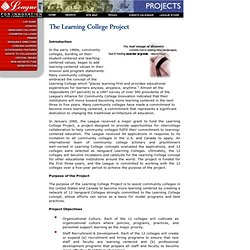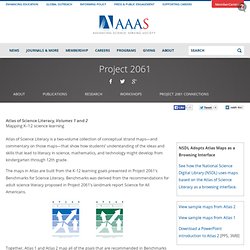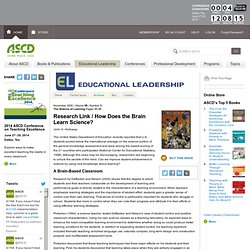

Learning College Project Champion Colleges. Introduction In the early 1990s, community colleges, building on their student-centered and teaching-centered values, began to add learning-centered values to their mission and program statements.

Many community colleges embraced the concept of the Learning College which "places learning first and provides educational experiences for learners anyway, anyplace, anytime. " Almost all the respondents (97 percent) to a 1997 survey of over 500 presidents of the League's Alliance for Community College Innovation indicated that their institutions will move toward becoming more learning centered in the next three to five years. Many community colleges have made a commitment to become more learning centered, a commitment that represents a significant dedication to changing the traditional architecture of education. Purpose of the Project Project Objectives George Boggs, President, American Association of Community Colleges Leo Chavez, Chancellor, Foothill-De Anza Community College District K. Department of Neurobiology and Anatomy - The University of Texas Medical School at Houston.
Welcome to Neuroscience Online, the Open-Access Neuroscience Electronic Textbook This online, interactive courseware for the study of neuroscience is provided by the Department of Neurobiology and Anatomy at The University of Texas Medical School at Houston.

The project is being developed under the direction of the Department Chair and Editor, John H. Byrne. This content is intended to function as an online multimedia resource, and therefore is not supported as a downloadable or printable text. After you have taken the opportunity to explore this electronic textbook, please take a moment to participate in our brief user survey. You have reached this version of Neuroscience Online by using an iOS or mobile device. Have content optimized for iOS devices, however, not all animations are in HTML5. Visit Neuroanatomy Online, our new open-access electronic laboratory designed to compliment Neuroscience Online.
Section 2: Sensory Systems Section 3: Motor Systems. AAAS - Project 2061 - Atlas of Science Literacy. Mapping K–12 science learning Atlas of Science Literacy is a two-volume collection of conceptual strand maps—and commentary on those maps—that show how students’ understanding of the ideas and skills that lead to literacy in science, mathematics, and technology might develop from kindergarten through 12th grade.

The maps in Atlas are built from the K-12 learning goals presented in Project 2061’s Benchmarks for Science Literacy. Benchmarks was derived from the recommendations for adult science literacy proposed in Project 2061’s landmark report Science for All Americans. Together, Atlas 1 and Atlas 2 map all of the goals that are recommended in Benchmarks as essential for every student to learn. Educational Leadership:The Science of Learning: How Does the Brain Learn Science? John H.

Holloway The United States Department of Education recently reported that U.S. students scored below the international average on the science portion of the general knowledge assessment and were among the lowest scoring of the 21 countries who participated (National Center for Educational Statistics, 1998). Although this news may be discouraging, researchers are beginning to unlock the secrets of the mind. Can we improve student achievement in science by using new knowledge about learning?
A Brain-Based Classroom Research by DeBacker and Nelson (2000) shows that the degree to which students and their teachers collaborate on the development of learning and performance goals is directly related to the characteristics of a learning environment. Pinkerton (1994), a science teacher, tested DeBacker and Nelson's view of student control and positive classroom characteristics. Pinkerton discovered that these teaching techniques had three major effects on his students and their learning.
Www.learninglandscapes.ca/images/documents/ll-no9-final-lr-2.pdf. Neuroeducation, cognitive neuroscience, teaching, psychology, learning, pedagogy. Dr.

Tracey Tokuhama-Espinosa, Ph.D.Director of IDEA (Instituto de Enseñanza y Aprendizaje or Teaching and Learning Institute), andProfessor of Education and Neuropsychology at the of the University of San Francisco in Quito, Ecuador The following is an excerpt from Mind, Brain, and Education Science: A comprehensive guide to the new brain-based teaching (W.W. Norton) a book based on over 4,500 studies and with contributions from the world’s leaders in MBE Science. “All animals learn; very few teach.” —(Blakemore & Frith, 2007, p. 119) Teaching was a simpler craft in generations past. MBE science began as a cross-disciplinary venture between cognitive neuroscience and developmental psychology, but then it reached further beyond these parameters to integrate education via educational psychology and educational neuroscience (Figure 1.1).
Figure 1.1. Source: Interpretation of Tokuhama-Espinosa’s transdisciplinary fieldby Nakagawa, (2008), redrawn by Bramwell 2010. Mind%20Brain%20Education. 9780807750339syll. IMBES - Home.